- Home
- Iain Banks
Raw Spirit: In Search of the Perfect Dram
Raw Spirit: In Search of the Perfect Dram Read online
Contents
About the Book
About the Author
Title Page
Dedication
Acknowledgements
Epigraph
Introduction – Out of our Heads
1: These Drugs of Subtle Virtue
The Land Rover: a paean
Great Wee Roads: a digression
2: Does not Rhyme with ‘Outlay’
Pronunciation: a word
Once upon a time: distilling as cottage industry
Distillery aesthetics: a highly partial overview
Childhood: a sentimental detour
3: Exploding Custard Factories
Whisky: the how-to bit
Notes: a note
4: To Jura
Willy’s Definitive Dram Definition
The Toby’s Party/The Balcony Scene story
5: The Heart of the Water
The midge: microscopic megascourge
Les and Iain’s Guide to Sensible Sailing
Loch Shiel: an appreciation, with reservations
Cask Strength
Drinking: you’d think it would be obvious
And that’s one of the good ones
6: WhiskyLandWorldVille!
Altitude problem
7: Break for Curry
Scotland: land of contrasts (not)
The Highlands: their identification and use
Highway the hard way: a road bore writes
8: Fear and Loathing in Glenlivet
The Jag: all the fruity flavour of yesteryear
Substances: the usual disclaimer
9: The Awemsys of Azshashoshz
Azshashoshz: that etymology in full
Head crash: talking on empty
McCartney: the case for madness
Ditto Brown: telling who your real friends are
10: Welcome to the Land of Heederum-Hawderum
Happy cars: in defence of anthropomorphism
What Happened to My Car
11: The Smell of a Full Scottish Breakfast in the Morning
How much? Nested digressions around Aussie wine
Writers: What Not to Say
Stop Press Handy Anti-Midge Tip
12: Porridge and Scottishness, Football and Fireworks
Fitba and the Greater Morality
13: Just the Whole Gantry, Then
Why Roger and I have mixed feelings about Brad
14: The Ends of the Country
Welcome to the Free World
Illegality: a thought experiment
Orkney: a Handy Hint on blending in
15: Tunnel Biking
Last rant before the end
Redman’s Blues
16: A Secret Still
Further Reading
Pronunciation Guide
Copyright
About the Book
Iain Banks is widely acknowledged as one of Britain’s greatest living writers, and as a Scotsman he knows something about whisky too. In Raw Spirit, Iain combines these two passions with a third, travel. Result: a unique journey around his native land: his goal, to find the perfect dram. And the perfect dram, surely, must be a single malt.
Along with a curious bunch of fellow travellers in a selection of cars, planes, ferries, trains, bikes and shoes, he journeys to remote shores and hidden glens, discovering the breathtaking and often inaccesible distilleries where tiny quantities of malt whisky are produced. He finds people engaged in centuries old tradition where eccentricity is the norm: it’s a journey of a thousand ‘cheers’ and subsequent wobbly walks, of unpronounceable place names and daft customs and superstitions. Will Banks prevail? It’s a tough job but as he puts it: ‘Someone’s got to do it, and I’m damn sure it’s going to be me.’
About the Author
Iain Banks was born in Scotland in 1954. He came to widespread public notice in 1984 with the publication of his first novel, The Wasp Factory. Since then he has gained enormous popular and critical acclaim with further works of fiction and science fiction. In 1993 he was acknowledged as one of the Best of Young British Writers. He lives in Fife, Scotland.
For Gary and Christiane
And to the memory of James Hale
Acknowledgements
This book really couldn’t have been written without the help of a lot of other people. I would like to thank my wife Ann, Oliver Johnson, John Jarrold, Toby and Harriet Roxburgh and everybody else at Ballivicar, Martin Gray, Les, Aileen and Eilidh McFarlane, Jim Brown, Dave McCartney, Ken MacLeod, Tom and Michelle Obasi, Roger Gray and Izabella, Mic Cheetham, Gary and Christiane Lloyd, Ray, Carole and Andrew Redman, Bruce, Yvonne, Ross and Amy Frater, Jenny and James Dewar, Andrew Greig and Lesley Glaister, my uncle Bob, everybody I met and talked to in the distilleries I visited – with particular appreciation going to all the managers and the long-suffering though invariably helpful tour guides who were prepared to answer my idiot questions – all at the Scotch Malt Whisky Society and, lastly and firstly, my parents.
Everything in here is true. Especially the bits I made up.
Introduction – Out of our Heads
‘BANKSIE, HI. WHAT you up to?’
‘Well, I’m going to be writing a book about whisky.’
‘You’re what?’
‘I’m going to be writing a book about whisky. I’ve been, umm, you know, commissioned. To write a book about it. About whisky. Malt whisky, actually.’
‘You’re writing a book about whisky?’
‘Yeah. It means I have to go all over Scotland, driving mostly, but taking other types of transport – ferries, planes, trains, that sort of thing – visiting distilleries and tasting malt whisky. With expenses, obviously.’
‘You serious?’
‘Course I’m serious!’
‘Really?’
‘Oh yeah.’
‘… Do you need any help with this?’
Beginning with something ending; in these perverse times this seems somehow appropriate. But first, a sort of mission statement:
This is a book more than nominally about single-malt whisky, about the art of making it and the pleasure to be had in consuming it. It is also, partly, about the business of selling and promoting the stuff, about the whisky industry in general, about drink in general, even about mood- or perception-altering substances in general. It’s not just about whisky, because drinking whisky is never about just drinking whisky; we’re social creatures and we tend to drink in a social context, with family, friends or just accomplices. Even if we resort to drinking alone, we drink with memories and ghosts.
It’s a book about the land and country I love, about Scotland and its people, its cities, towns and villages and the landscape around them. It isn’t going to be a book of detailed tasting notes – frankly I don’t have the nose, appearances being deceptive – though there will usually be a brief description of a whisky’s generally accepted character, and occasional attempts to describe a particularly favoured dram in a more personal manner where I think I can get away with it. It’s not a guide book to Scotland, either, though a few restaurants, hotels, cultural sites, scenic areas and tourist traps are bound to be mentioned.
I’m going to travel to the far north, to Caithness and Orkney; to Dumfries and Galloway, to Skye and Mull and Islay, to Speyside, Moray, Aberdeenshire, Perthshire, Argyll, Clydeside, Lothian and wherever else I can find distilleries. I’m not going to every single one (though I do intend to sample the wares of each, including some that are closed or no longer exist) because frankly they’re not all worth seeing once you’ve a general idea how distilleries work, and also because they’re not all set up to receive visitors and – after a few
feet-finding, hand-holding pro-style tours at the start – I’m not looking for any special favours just because I’m writing a book.
It will – appropriately, given the subject matter – be a staggered tour; I’ll be taking in distilleries in clusters and individually over single weeks and day trips, returning to my home in North Queensferry in between (at least partly because I’m intending to buy a full bottle of as many single malts as I can, and, with about a hundred distilleries in Scotland, plus the closed ones, I’ll need to get back fairly frequently to off-load and free up some boot-space). North Queensferry – The Ferry, as we locals tend to call it – is where I lived until I was nine, and it’s been my home for the last thirteen or so years. I have family here, and it’s home, too, to a lot of memories. It’s my hub, my docking station, and I make no excuses for returning here to recharge.
Roads, cars (quite a lot of roads, and quite a lot of cars, come to think of it … and one motorbike) are going to feature heavily in the book, as well as ferries, trains and aircraft and any other forms of transport I can find which can be shackled into the narrative if there’s the even the least semblance of an excuse for it.
This is a search for the perfect dram, undertaken in the full knowledge that such a thing probably doesn’t exist. That doesn’t matter; it’s a quest, and any quest is at least partly its own point. And besides, you never know.
This book will, inevitably, be about me, my family and my friends too, especially those friends who have been persuaded – with, you may not be surprised to learn, no great deal of body-part manipulation involved – to take part in this project. As a natural result, old adventures – several of them involving no illegal activity whatsoever – and ancient anecdotes of dubious and disputed authenticity will be ruthlessly exhumed, exposed, exaggerated and exploited. This, let’s face it, is a book about one of the hardest of hard liquors and for all this Let’s be mature, I just drink it for the taste not the effect, honest, Two units a day only stuff … it is, basically, a legal, exclusive, relatively expensive but very pleasant way of getting out of your head.
And, talking about being out of our heads, this book can’t help being about the war. You know the one; the Iraq war, Gulf War II, This Time It’s Personal. My travels are starting just as the war begins, which makes it kind of hard to ignore, and, anyway, what’s happening around me as I make my way across Scotland, visiting distilleries, has to have some bearing on matters; I don’t intend to ignore the people or the places or the scenery or the weather around me as I make these journeys and I can’t ignore the political environment either, both at home and abroad. This is not as peripheral as it might sound in a book about whisky; the stuff, certainly as we know it, has always been up to its pretty little bottleneck in politics.
So. That ending at the beginning. Yesterday morning, on what was officially the first day of spring, my wife and I cut our passports in half and sent the remains to Mr Blair’s office in Downing Street.
1: These Drugs of Subtle Virtue
‘HIYA, BANKSIE! WRITTEN any good books lately?’
‘Not if you believe certain critics, but I’m going to be writing one about whisky.’
‘A book about whisky?’
‘Yeah. Malt whisky.’
‘You’re kiddin!’
‘Not as such.’
‘This mean you’re going to have to do the “R” word?’
‘The “R” word? Oh! Research? Yeah, basically. Goin to have to drive round Scotland, or, well, be driven round Scotland, take trains, ferries, planes and such, go to distilleries, taste whiskies, that sort of—’
‘And they’re going to pay you for this?’
‘They’ve already started.’
‘Right. I see. D’you need a hand?’
Friday the 21st of March 2003 is a good three-ferry day. It starts kind of weirdly; I get up very early and print up a load of A4 posters with your standard anti-war slogans: NO BLOOD FOR OIL, NOT IN MY NAME, and TONY BLIAR (my personal favourite, though probably not really all that effective). While those are printing I watch the breakfast news coverage of our bouncing, day-old war. I plaster the posters across the Land Rover: one in a transparent sleeve taped across the spare wheel on the rear door, six on the side windows. There’s even one on the sunroof, though I think I must have been getting a bit carried away by this stage; the only people ever likely to see that one are passing helicopter pilots and people who happen to be walking over motorway bridges as I drive below.
After I’ve taken the scissors to our passports, I compose a brief covering letter, send an email explaining why we’re doing what we’re doing to the Guardian’s letters page and head into Inverkeithing to send the passports’ remains via registered mail to 10 Downing Street.
I come home and say goodbye to Ann; I’ll be away almost a week on Islay. After that, though I’m supposed to be making for the west coast, I head into central Edinburgh and drive around for a bit, trying to show off my posters along Queensferry Road, Charlotte Square and George Street before crossing Princes Street and going up the Mound past the temporary Scottish Parliament building to the castle and down the Royal Mile, then back to Princes Street.
In the city centre, on this bright, fresh, sunny day – singularly inappropriate for my mood, but there you go, that’s the pathetic fallacy for you – a few people notice the posters and some of them nod or give a thumbs up; the people who disapprove just tend to look away. But most people don’t look in the first place. Maybe I should have used coloured sheets of A4, or even just printed the words in something other than black, however big the font and however starkly pointed the gesture seemed at the time. Maybe I should have honked my damn horn.
I head west, out past the airport for the M8 through Glasgow, to cross the Clyde from Gourock to Dunoon.
Looking down at the trucks and cars sitting on the open vehicle deck on the ferry, I can’t even see the poster on the Land Rover’s sunroof; it’s one of those stippled black glass sunroofs that just hinges up a little rather than slides right back, and because of the fine black mesh effect on the glass the writing on the poster is only visible from directly above.
I stand in the sunlight, listening to the cries of the wheeling gulls as I drink a Styrofoam cup of tea and munch on a soggy, microwaved shell pie. I watch the depressingly decrepit remains of what used to be the modestly majestic Gourock Pier fall astern to be replaced by the arse-out aspect of the old tenements whose more respectable fronts face out into the main street on the far side. A glitter of windscreens in the seafront car park where a few guys stand with fishing rods, then the outdoor swimming pool and the rising slope of pleasant Victorian sandstone villas and early and late twentieth-century bungalows. I look around, at the canted streets, budding trees and whin-covered slopes, crowned by the folly on top of Tower Hill to the east, at the hills and mountains to the north and west, at the broad river, disappearing to a bright horizon in the south.
I used to live here, in Gourock. I used to work there, on the pier.
When I was young, from the age of about ten into my mid-teens, I’d lie awake at night in the summer in my bedroom high above the bay and the great curve of Gourock pier. Each fair night, in those warm months, I’d hear, through a cracked open window, the sound of a distant engine, puttering quietly away from the quayside a half-mile or so away. It came from one of the dozen or so ferries and steamers which always tied up there during the summer season.
It was the end of the Clyde’s golden age, when not that many people had cars and a lot of Glaswegians still took day trips and whole two-week holidays doon the watter, to resorts like Largs, Dunoon and Rothesay. I worked on the pier – catching mooring ropes and hoisting gangways, mostly – for a couple of summers while I was at University in the early seventies, along with a couple of full-time pier porters and one or two old school pals from Gourock High. In retrospect, I feel privileged to have been there, witnessing the end of an era. We caught the ropes off the Waverley – the world’s
last seagoing paddle steamer, and still to be found thudding and splashing its way round the seaside resorts of Britain during the summer – and we watched the newfangled hovercraft come roaring up the beach near the Pilots’ Station at the downstream end of the pier, spitting stones from under its skirts like bullets and generally making a nuisance of itself. As I say, the Waverley’s still hanging on in there, but the hovercraft never really caught on; some eras come and go almost before you realise they’ve started.
Now all the great steamers are gone and just the car ferries survive; there are a few small boats running across the Clyde to Helensburgh and Kilcreggan, and the odd booze cruise – sometimes on the Waverley if it’s on the Clyde – to somewhere further afield, but that’s your lot, and many of the old piers are crumbling away. Even Gourock pier, home to the Dunoon ferries, is mostly a ruin. The trains stop outside, further down the platforms instead of running on into the long galleried curve of the serried glass roof, most of which has been demolished, and even the pier’s surface has disappeared once you go beyond the car ferry’s ro-ro ramp; all that’s left are the concrete foundations which used to support the wood and tarmac above.
It all looks a bit like somebody’s mouth just after they’ve had most of their teeth removed. I think if you’d never seen the place before you’d find it ugly just on first principles, but for somebody like me, remembering how handsome it used to look, it’s saddening too.
I hear there are plans to redevelop the whole seafront in Gourock and – always providing it’s not just the usual excuse for developers to cram the maximum number of tiny flats into the one space with minimal facilities – it can’t happen soon enough.
Public space/private space. I cheer myself up, partially, by gazing at the Defender.
The Land Rover: a paean.
Ah, the Land Rover. It is, to give its full title, a Land Rover Defender 110 County Station Wagon Td5. It’s the particularly agricultural-looking model of the Land Rover stable, the ugly one in a family not noted for being overburdened with outrageously good looks in the first place. It has straight up-and-down sides and flat-plane glass all round (except for the wee curved windows set into the edge of the roof which are for looking up at mountains, allegedly). Engine sounds like a bucket of bolts in a tumble drier.

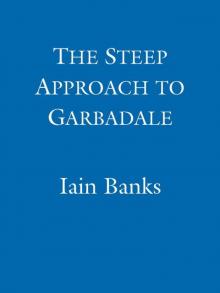 The Steep Approach to Garbadale
The Steep Approach to Garbadale Stonemouth
Stonemouth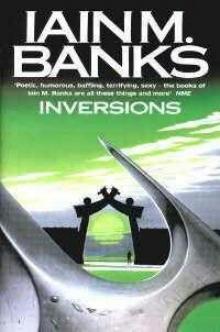 Inversions c-6
Inversions c-6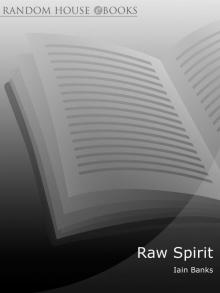 Raw Spirit: In Search of the Perfect Dram
Raw Spirit: In Search of the Perfect Dram The Wasp Factory
The Wasp Factory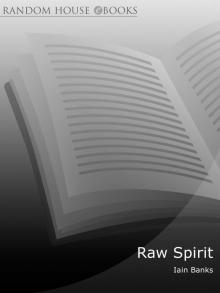 Raw Spirit
Raw Spirit Walking on Glass
Walking on Glass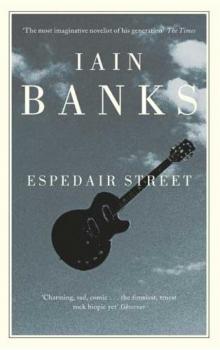 Espedair Street
Espedair Street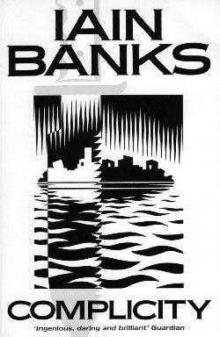 Complicity
Complicity Whit
Whit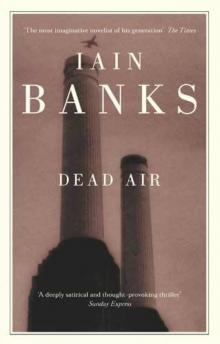 Dead Air
Dead Air The Bridge
The Bridge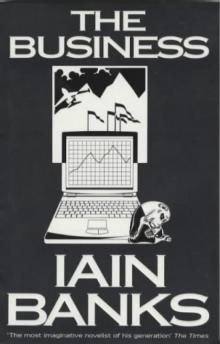 The Business
The Business Canal Dreams
Canal Dreams The Crow Road
The Crow Road